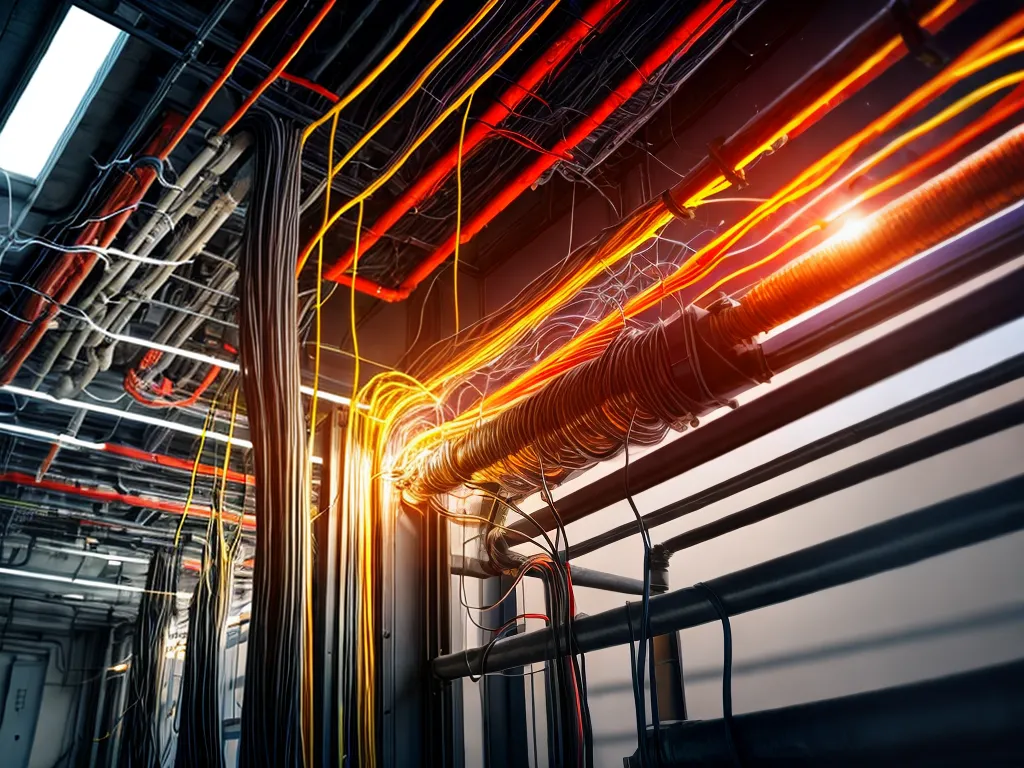
Working in industrial settings exposes employees to many potential electrical hazards that can cause serious injuries or even death. As an electrician in an industrial facility, it is my duty to ensure all electrical systems are properly installed and maintained to provide the highest level of safety for workers. By following proper wiring methods and safety protocols, I can greatly reduce electrical risks in my workplace.
Understanding Electrical Hazards in Industrial Facilities
Industrial facilities contain many types of hazardous electrical equipment and wiring methods. Some of the most common dangers include:
- Electrocution - Coming into direct contact with exposed live parts can result in electric shock, burns, cardiovascular arrest, and death.
- Electric arcs - Faulty equipment can produce extreme heat, molten metal, and blasts strong enough to injure workers several feet away.
- Fire - Damaged wiring and equipment can overheat and ignite nearby combustible materials. Electrical fires are extremely dangerous due to toxic smoke.
- Explosion - Some industrial environments are prone to explosions. Electrical arcing or overheated equipment may provide an ignition source.
While risks cannot be completely eliminated, following safety-focused wiring methods can greatly reduce hazards.
Using Proper Wiring Techniques to Improve Safety
As an electrician, I follow strict protocols when installing or modifying electrical wiring systems in industrial facilities. Key wiring methods I use to enhance safety include:
Appropriate Wire and Cable Selection
- Choose wire rated for adequate ampacity to handle expected loads to prevent overheating.
- Use wiring with thick insulation to protect conductors. Consider insulation rated for wet/damp locations.
- Use shielded cables or conduit where wiring is exposed to physical damage.
Secure Cable Connections
- Use torque screwdrivers when connecting conductors to ensure tight connections. Loose wiring can arc and overheat.
- Avoid wire splices when possible. When needed, use splice kits listed for industrial use.
- Verify all connections are tight after vibration. Vibration can loosen initially tight connections over time.
Proper Overcurrent Protection
- Size circuit breakers or fuses to protect wiring from excessive current and overload. This prevents conductor insulation damage and arcing faults.
- Use fast-acting breakers designed to limit arc flash hazards.
- Ensure each individual conductor has its own overcurrent protection. Protect all phase, neutral, and grounding conductors.
Appropriate Conductor Routing
- Route cables along structural surfaces and through protective conduit to avoid physical damage.
- Avoid routing cables through doorways, under carpets, or above drop ceilings where they may be impacted or damaged.
- Provide strain relief for conductors to avoid loose connections caused by tension or vibration.
- Avoid excessive bending of cables which can damage insulation over time.
Hazard Warning Signs
- Post arc flash and shock hazard warning labels on industrial equipment and panels so workers understand risks.
- Indicate proper personal protective equipment (PPE) required when working on equipment.
Ongoing Inspections and Maintenance
- Perform frequent checks of equipment and wiring to identify potential damage before it results in a failure.
- Tighten connections and replace damaged wiring and parts promptly.
- Keep detailed maintenance logs to track inspections and repairs.
By consistently implementing these wiring best practices, I can help provide a safer working environment and reduce the risk of catastrophic electrical failures. Proper installation is key, but ongoing maintenance is also crucial for sustaining safety.
Using Appropriate PPE and Safety Protocols
In addition to proper wiring techniques, we enforce strict safety protocols and use of personal protective equipment (PPE) when performing electrical work:
- Electrical PPE such as insulated gloves, face shields, and arc flash suits to provide protection from arc flash and shock hazards.
- Lockout/tagout procedures to de-energize and isolate equipment before starting work.
- Voltage testers to confirm equipment is truly de-energized. We verify absence of voltage before touching any conductors or connections.
- Insulated mats provide added protection when working in damp areas.
- Observe minimum safe working distances from energized equipment based on voltage levels.
- Fire extinguishers suitable for electrical fires must be kept nearby.
- Only qualified electricians should access or modify wiring and equipment.
Strict adherence to our safety protocols ensures we can complete electrical work safely and reduce risks even when working on live systems.
Real-World Examples Where Proper Wiring Prevented Disasters
Proper wiring methods do prevent electrical hazards, as evidenced by the following examples:
Preventing Arc Flash Incidents
I once discovered severely corroded bus connections in a 480V MCC bucket that supplied a critical process area. Instead of improperly splicing wires, I diligently replaced the buckets to provide secure, corrosion-free connections. This prevented a potential arc flash incident that could have severely injured workers nearby.
Avoiding Overloaded Circuits
A facility I worked in needed to add new production equipment. I calculated the total expected load and installed new thicker cables and properly sized breakers. This prevented overloads and risk of fires which could have occurred if existing cables were reused.
Eliminating Shock Risks
In one facility's wet process area, I discovered damaged conduit exposing wiring. Instead of quick fixes, I rerouted cables through waterproof seal-tight conduit and sealed all penetrations. This change eliminated the risk of exposed conductors energizing equipment frames and injuring operators.
Situations like these demonstrate why proper methods are critical. Taking the time to do it right the first time prevents injuries and saves companies the high costs associated with electrical failures.
Conclusion
By following safety-focused wiring techniques, wearing proper PPE, and adhering to established protocols, I help provide reliable and safe electrical systems in industrial facilities. The most important thing is to avoid shortcuts and fix problems completely when discovered instead of temporary quick fixes. While industrial settings contain inherent hazards, through diligent electrical safety practices I can reduce risks considerably and protect workers from preventable tragedies. My electrical expertise coupled with a dedication to safety makes improved electrical safety achievable in even the most hazardous industrial environments.